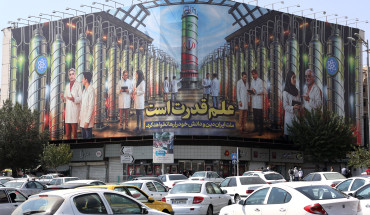Originally posted December 2009
The conflict that tore Afghanistan apart following the Communist coup of 1978 and the Soviet invasion of 1979 resulted in a massive population displacement. According to the United Nations High Commissioner for Refugees (UNHCR), by 1990 Afghans had become the world’s largest refugee group, accounting for approximately 6 million people.[1] Although the exodus of Afghans has reached an unprecedented level in recent decades, it is important to note that the region has a long history of migration: Nomads who move seasonally to bring their herds to better pasture lands use the opportunity to trade with sedentary farmers; mountain people go to urban centers or lowlands to find menial jobs; pilgrims, scholars, soldiers, and refugees are also part of this cultural tapestry.[2]
There is a growing awareness in migration studies that movements are neither definitive nor temporary, but rather follow a recurrent and multidirectional logic. In the Afghan case, many refugees have visited home after their first flight. There are few domestic units that do not have at least one member residing abroad. Through their continuous back-and-forth mobility, Afghans have established a transnational community that not only encompasses the surrounding countries of Afghanistan, Pakistan, and Iran, but extends to the Arabian Peninsula and the West. Today, as in the past, Afghans — like other groups of migrants and refugees — are sending large sums of money to their relatives back home.
It is crucial to look at these remittances for several reasons. First, they show how the flight from violence is not always incompatible with economic strategies. Second, they have social and economic implications for their regions of origin of refugees and migrants. Third, the remittances stimulate and orientate mobility, because refugees and migrants provide information to their relatives in the region of origin about the opportunities that exist elsewhere. Remittances reveal the existence of social networks that connect distant locations. For Afghans, dispersion is not merely a traumatic consequence of war and poverty; it also may be a planned choice by which members of family groups strive to diversify their livelihoods. In so doing, they spread the risks caused by the insecurity that dominates their lives as much in their region of origin (persistent violence) as in their destinations (police pressure, waves of expulsion).
The case of the Hazaras is illustrative. Originating from the central mountains of Afghanistan, this largely Shi‘ite community is regarded with suspicion and contempt by the Sunni majority. Driven by poverty and political marginality, they left their home region in the past in search of jobs. The Hazaras, like other Afghan groups, have set up very effective migration networks articulated on the dispersion of kith and kin between Afghanistan, Pakistan, and Iran.[3] Since the mid-1990s, an increasing number have gone to Europe, North America, Australia, and New Zealand.[4] Each location has advantages and disadvantages. In Afghanistan, the Hazaras have experienced a process of political empowerment, but the overall situation of the country remains bleak. In Pakistan, most Hazaras headed for Quetta, the capital of Baluchistan. There, they benefited from a Hazara community that had been established in the late 19th century when the town was part of British India. Refugees and migrants were able to move relatively freely, but few economic opportunities were available.
In contrast, it is fairly easy to find a menial job in Iran on a building site, in an industrial mill, or on a farm. However, due to increasing pressure from the authorities of the Islamic Republic and the periodic waves of expulsion, it seems difficult to settle down on a permanent basis with a family. When an Afghan working in Iran wants to send his savings to his family in his home country, he cannot use the official banking system because he is unlikely to have identity papers. An additional obstacle is the banking network in Afghanistan: It has gradually expanded since the fall of the Taliban in 2001, but is still almost nonexistent in the countryside. The Afghan migrant therefore entrusts his money to a businessman who specializes in informal remittances, known locally as a hawaladar, from hawala, “transfer (of money),” “credit letter,” or “check.” Where possible, the migrant gets in touch with a hawaladar known to him — a member of his tribal section or a person from the same valley or from the same district as he. If the relationship is more distant, the presence of a middleman who is responsible to both parties is required. The hawaladar sends a letter to his partners in Afghanistan stating the details of the transaction and gives the migrant another letter to be sent to his family.
Since the fall of the Taliban regime and the establishment in late 2001 of a government in Kabul supported by the international community, most transfers have been made directly from Iran to Afghanistan. In the 1990s, however, tensions between the Shi‘ite regime and the Sunni militants made crossing the border between the two countries particularly difficult. Therefore, the hawaladar active in Iran usually remitted the collected funds to Pakistan, either by bank transfer or in the form of goods (particularly manufactured goods such as plastic items, clothing, or fabrics). A partner recovered the money or the merchandise and sold them on the spot, turning a profit. He could use the money obtained to make some additional profit (on the currency exchange market for example), but ended up buying other goods (flour, rice, cooking oil, tea, and sugar, but also pressure cookers or plastic slippers). These goods were shipped by truck to a third partner who ran a store in rural Afghanistan. With the money from the sale, the shopkeeper reimbursed the families of migrants. The commission charged for this transaction was low (most of the time, less than 3%), because the benefit of a hawaladar was linked mainly to his capacity to run a business without having sizable capital of his own.
Despite the trauma of war and exile, the Afghans thus have been able to take advantage of geographical dispersion and the resulting diversification of economic activities to develop particularly effective transnational structures of cooperation.
In development studies, the debate about the effects of remittances in the regions where migrants originate is intense. On the one hand, some scholars stress that the money sent by migrants is often intended for the purchase of consumer goods and prestigious or lavish spending, thereby contributing to increasing social inequality. On the other hand, a growing number of development agencies emphasize the potentially positive role that remittances play in contributing to local economies, provided that capital is invested productively.
If the emigration of young men has caused long-term problems for the reconstruction of Afghanistan, it is nevertheless a survival strategy that has proven effective. The hawala system has helped many Afghan families to cope when facing the most trying conditions. Beyond their economic contributions and limitations, remittances from migrants have a social dimension. It is through this means that scattered people remain in contact and still constitute a group of solidarity and mutual aid. Remittances thus help to produce and reproduce social relations despite war and dispersion.
In the case of Afghanistan, remittances have further potential: The hawala system could be complemented by a banking system that contributes to the transformation of the money sent into a source of investment. In this way, remittances could help finance the rehabilitation of infrastructure and participate in the creation of jobs.
The hawala system as used by Afghans — a complex intertwining of cooperation and competition, trust and mistrust — helps us to understand how the geographical and economic diversification that results from population displacement can, and has, spread the risk and become a planned strategy.
[1]. Rupert Colville, “Afghan Refugees: International Support Is Draining Away After Two Decades in Exile?” Refuge, Vol. 17, No. 4 (1998), pp. 6-11.
[2]. M. Jamil Hanifi. “Anthropology and the Representations of Recent Migrations from Afghanistan,” in E.M. Godziak and D.J. Shandy, eds., Rethinking Refuge and Displacement: Selected Papers on Refugees and Immigrants, Vol. 8 (Arlington, VA: American Anthropological Association, 2000), pp. 291-321.
[3]. Alessandro Monsutti, War and Migration: Social Networks and Economic Strategies of the Hazaras of Afghanistan (New York and London: Routledge, 2005).
[4]. Alessandro Monsutti, “Itinérances transnationales: un éclairage sur les réseaux migratoires afghans,” Critique Internationale, No. 44 (2009), pp. 83-104.
The Middle East Institute (MEI) is an independent, non-partisan, non-for-profit, educational organization. It does not engage in advocacy and its scholars’ opinions are their own. MEI welcomes financial donations, but retains sole editorial control over its work and its publications reflect only the authors’ views. For a listing of MEI donors, please click here.













